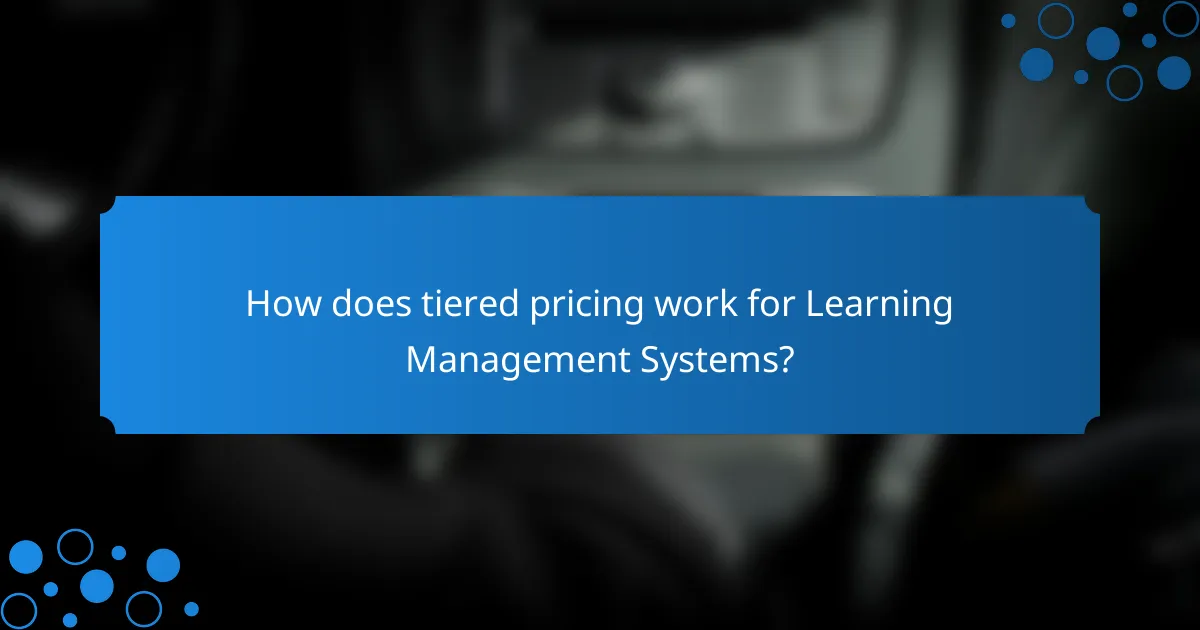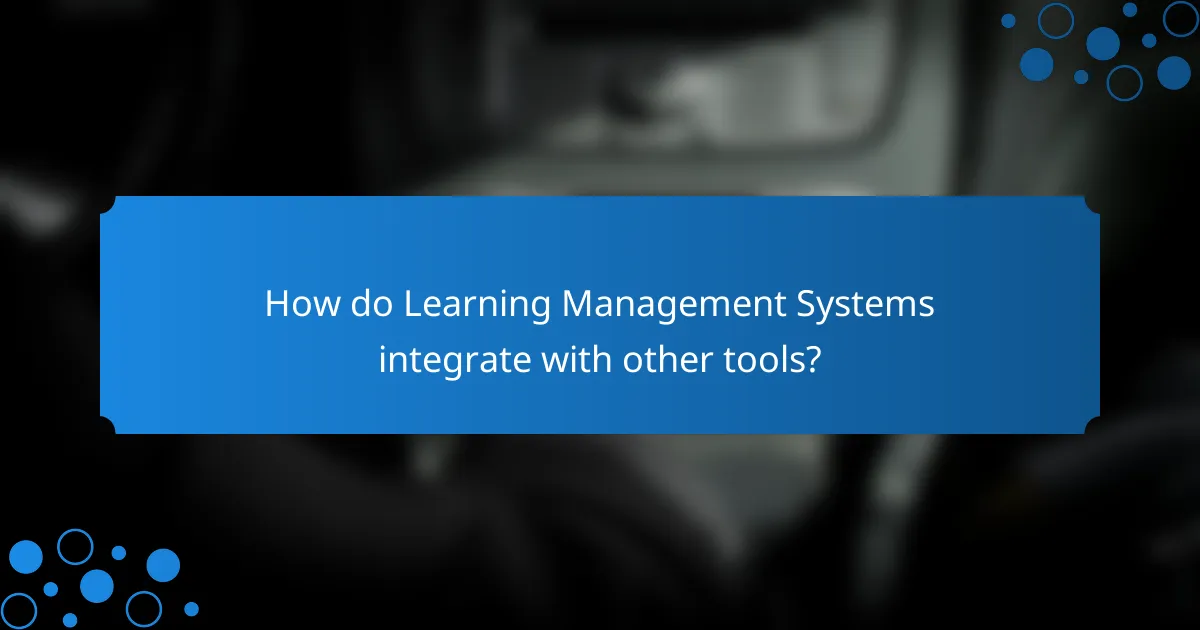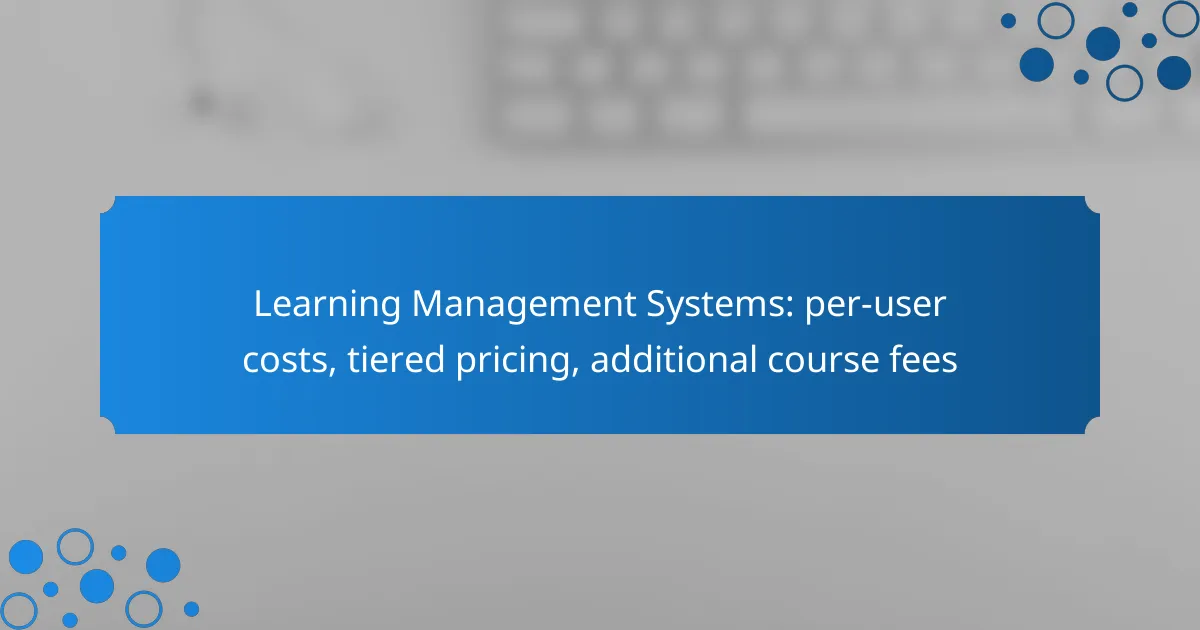Learning Management Systems (LMS) offer a range of per-user costs, typically between £5 and £50 per month, influenced by the features and services provided. Organizations can benefit from tiered pricing models that allow them to select plans tailored to their size and needs, often with discounts for larger user bases. Additionally, users should be aware of potential extra course fees for premium content and certifications, which can further affect the overall investment in an LMS.

What are the per-user costs of Learning Management Systems in the UK?
The per-user costs of Learning Management Systems (LMS) in the UK typically range from £5 to £50 per user per month, depending on the features and services included. Understanding these costs is essential for organizations looking to implement an LMS, as they can significantly impact the overall budget.
Average per-user pricing for popular LMS platforms
Popular LMS platforms in the UK, such as Moodle, Blackboard, and TalentLMS, have varying pricing structures. For instance, Moodle is often free for self-hosted versions, while hosted solutions can cost around £10 to £20 per user monthly. Blackboard and TalentLMS generally charge between £15 and £50 per user per month, depending on the level of support and additional features.
Factors affecting per-user costs
Several factors influence the per-user costs of LMS platforms, including the number of users, the complexity of features, and the level of customer support. Larger organizations may benefit from tiered pricing, which can reduce the per-user cost as the number of users increases. Additionally, premium features such as advanced analytics, integrations, and custom branding can raise the overall cost.
Cost comparisons among top LMS providers
When comparing costs among top LMS providers, it’s essential to consider not just the per-user fee but also the value offered. For example, while a platform may have a higher monthly fee, it might provide superior user experience and support, which can justify the expense. A simple comparison table can help visualize these differences:
| LMS Provider | Average Cost per User (£) | Key Features |
|---|---|---|
| Moodle | Free – £20 | Customizable, open-source |
| Blackboard | £15 – £50 | Comprehensive tools, analytics |
| TalentLMS | £15 – £50 | User-friendly, integrations |

How does tiered pricing work for Learning Management Systems?
Tiered pricing for Learning Management Systems (LMS) involves different pricing levels based on user count or features. Organizations can choose a plan that best fits their size and needs, often receiving discounts as they scale up their user base.
Overview of tiered pricing models
Tiered pricing models typically categorize plans into several levels, such as basic, standard, and premium. Each tier offers a set of features, with higher tiers providing more advanced functionalities or greater user limits. This structure allows organizations to select a plan that aligns with their specific requirements and budget.
Common factors influencing tier levels include the number of users, access to additional features, and customer support options. For example, a basic plan may support up to 50 users, while a premium plan could accommodate hundreds or thousands.
Benefits of tiered pricing for organizations
One significant benefit of tiered pricing is cost efficiency; organizations can save money as they grow by moving to a higher tier that offers a better rate per user. Additionally, tiered pricing allows for flexibility, enabling organizations to adjust their plans based on changing needs or user growth.
Another advantage is the ability to access a range of features that can enhance learning experiences. Organizations can start with essential tools and upgrade as they require more advanced capabilities, ensuring they only pay for what they need at any given time.
Examples of LMS with tiered pricing structures
Several popular Learning Management Systems utilize tiered pricing structures. For instance, platforms like Moodle and TalentLMS offer various plans that cater to different user counts and feature sets. Moodle provides a free open-source option, while TalentLMS has tiers that range from basic to enterprise, with pricing based on the number of users.
Another example is Docebo, which offers a tiered pricing model based on the number of active users and additional features such as integrations and analytics. Organizations can choose the plan that best fits their size and training needs, making it easier to manage costs effectively.

What additional course fees should be considered?
Additional course fees in Learning Management Systems (LMS) can significantly impact the overall cost for users. These fees may include charges for premium content, certification, or administrative services that go beyond the basic subscription or per-user pricing.
Common additional fees in LMS
Common additional fees in LMS can include costs for course materials, certification exams, and access to specialized content. Some platforms may charge for features like advanced analytics or personalized support, which can enhance the learning experience but add to the total expense.
Additionally, fees for course upgrades or supplementary resources, such as textbooks or software licenses, are often encountered. It’s essential to review the pricing structure carefully to avoid unexpected costs.
Impact of additional fees on total cost
Additional fees can significantly increase the total cost of using an LMS, sometimes by a substantial percentage. For instance, if the base subscription is $200 per user annually, additional fees could raise the total to $300 or more, depending on the services selected.
Understanding these costs upfront helps in budgeting and ensures that users are aware of the full financial commitment. It’s advisable to calculate potential additional fees based on anticipated usage to avoid surprises.
Examples of LMS with additional course fees
Many popular LMS platforms incorporate additional course fees. For example, platforms like Coursera may charge for certificates upon course completion, while Udemy often has costs for premium courses that exceed the basic offerings.
Another example is Moodle, which may require fees for plugins or advanced features that enhance functionality. It’s important to check each platform’s pricing details to understand the full scope of potential costs.

What criteria should be used to select a Learning Management System?
Selecting a Learning Management System (LMS) involves evaluating several key criteria that align with your organization’s educational goals, user needs, and budget. Focus on features, scalability, user experience, and total cost to ensure the system meets both current and future requirements.
Key features to evaluate in LMS
When assessing LMS options, prioritize features that enhance learning and administrative efficiency. Essential functionalities include course creation tools, user management, reporting and analytics, mobile compatibility, and integration capabilities with existing software.
Consider the user interface and experience as well. A system that is intuitive and easy to navigate will encourage higher engagement and reduce training time for both instructors and learners. Look for customizable dashboards and support for various content formats, including video, quizzes, and interactive elements.
Importance of scalability in LMS selection
Scalability is crucial when selecting an LMS, as it determines the system’s ability to grow with your organization. A scalable LMS can accommodate an increasing number of users, courses, and content without compromising performance or requiring a complete system overhaul.
Evaluate whether the LMS can handle future expansions, such as adding new features or integrating with additional tools. This foresight can save costs and resources in the long run. For example, if you anticipate growth from hundreds to thousands of users, choose a system that can seamlessly scale to meet that demand without significant additional fees.

How do Learning Management Systems integrate with other tools?
Learning Management Systems (LMS) integrate with various tools to enhance functionality and streamline educational processes. These integrations can include content creation tools, communication platforms, and assessment systems, allowing organizations to create a cohesive learning environment.
Common integrations with LMS platforms
Common integrations for LMS platforms include tools for video conferencing, such as Zoom or Microsoft Teams, which facilitate live classes and meetings. Additionally, content management systems like Google Drive or Dropbox allow easy access to learning materials. Other popular integrations involve assessment tools like Quizlet or Turnitin, which help in evaluating student performance.
Many LMS platforms also support integration with customer relationship management (CRM) systems, enabling organizations to track learner progress and engagement effectively. This can enhance the overall learning experience by providing personalized content based on user data.
Benefits of LMS integrations for organizations
Integrating LMS with other tools offers several benefits for organizations, including improved efficiency and enhanced user experience. By connecting various platforms, organizations can automate administrative tasks, reducing the time spent on manual processes.
Moreover, these integrations can lead to better data analytics, allowing organizations to gain insights into learner behavior and course effectiveness. This data can inform instructional design and help tailor learning paths to meet individual needs, ultimately improving learner outcomes.

What are the emerging trends in Learning Management Systems?
Emerging trends in Learning Management Systems (LMS) focus on enhancing user experience and engagement through innovative technologies and methodologies. Key developments include the integration of artificial intelligence and a growing emphasis on mobile learning solutions to accommodate diverse learning environments.
Growth of AI in LMS
The incorporation of artificial intelligence in Learning Management Systems is revolutionizing how educational content is delivered and personalized. AI can analyze user behavior and learning patterns, enabling tailored course recommendations and adaptive learning paths that cater to individual needs.
For instance, AI-driven chatbots can provide real-time support to learners, answering questions and guiding them through course materials. Additionally, predictive analytics can help educators identify at-risk students, allowing for timely interventions to improve retention rates.
Increased focus on mobile learning solutions
Mobile learning solutions are becoming increasingly important as more learners seek flexibility in their education. LMS platforms are now prioritizing mobile-friendly designs and features, allowing users to access courses anytime and anywhere through smartphones and tablets.
To implement effective mobile learning, organizations should ensure that their LMS supports offline access and has a responsive design. This approach not only enhances user engagement but also accommodates learners who may have limited access to traditional computer setups.
